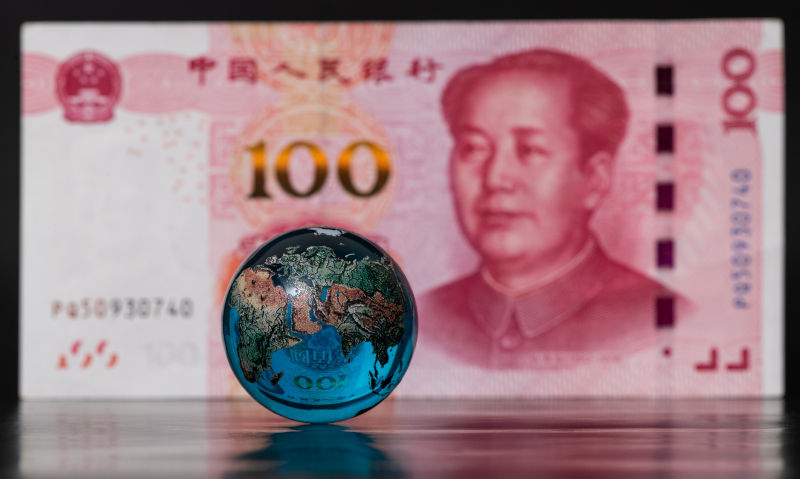China’s FDI, not the BRI, drives a global green transition
October 22, 2025
Over the past few years, outward Chinese foreign direct investment commitments in green manufacturing have grown rapidly and now dwarf the Marshall Plan in their scale.
FDI commitments from Chinese firms to green manufacturing since 2022 now stand at more than US$220 billion and make up a global decarbonisation bargain that can build on the financial and technological capabilities of Chinese firms. These commitments span green sectors such as batteries, solar, wind, new energy vehicles and green hydrogen — all areas in which Chinese manufacturing has a strong competitive advantage.
In terms of geography, Chinese FDI commitments span 54 countries across Southeast Asia, the Middle East and North Africa, Latin America, Central Asia and Europe. This offers tremendous potential for navigating a period in which there has been a major fracture in the global order that has made the push towards decarbonisation and Paris-aligned climate goals more precarious.
Some commentators have been quick to frame this development as China’s Belt and Road Initiative 2.0. On scrutiny, this framing appears incorrect and risks derailing a Global South decarbonisation project in which Chinese firms can play an important role. The BRI was launched by Xi Jinping in 2013 and primarily built around a massive scaling of infrastructure investments as a way of resurrecting the historical silk route to Europe across Central Asia and parts of South Asia.
The BRI was mammoth in scale, with some estimates suggesting that it had reached the trillion-dollar mark in 2023. Careful assessments of the BRI’s impact on aspects such as debt burden and debt servicing have questioned its impact on debt sustainability across recipient countries. That the BRI opened up a global geopolitical quagmire is also an issue that’s been debated.
There are three key aspects to understanding whether the recent explosion of Chinese outward green manufacturing FDI amounts to a BRI redux.
First, the BRI was built around a vision articulated by Xi and was carefully co-ordinated by Chinese state actors, primarily through Chinese development banks. A large chunk of the infrastructure financing under the BRI came from Chinese development finance institutions like the China Development Bank and the Export-Import Bank of China.
The current expansion of green manufacturing FDI is not co-ordinated by state actors, but rather by Chinese firms looking to expand their production activities globally and seeking access to markets protected by import barriers. The expansion of Chinese firms abroad seeks to escape the domestic constraints they face as they navigate cut-throat competition domestically. This distinction is important as Chinese green FDI growth is quite different from investment under the BRI promoted by the interests of the Chinese state.
Second, while the BRI relied primarily on a combination of loans and investments, the bulk of the risk from the recent surge of Chinese FDI exists on the books of Chinese firms and not the countries who are receiving it. This difference means that green FDI through Chinese firms is primarily delivered through market mechanisms that do not generally exacerbate macro-economic stability or debt sustainability in destination countries like the BRI. In this respect, Chinese green FDI expansion is more conducive to the needs of the countries in the Global South as they chart their own decarbonisation strategies.
Third, the BRI had explicitly geopolitical motives that risked antagonising some of the most important members of the Global South. Nowhere else was this more evident than in the case of the China-Pakistan Economic Corridor – a source of great tension and suspicion that has long derailed any coherent attempt at better economic integration between India and China and the charting of a Global South decarbonisation agenda. The green Chinese FDI boom could consign the geopolitical question to the political sidelines by centring private investments as the driver of a global decarbonisation bargain.
These three factors make the expansion of green FDI by Chinese firms distinct from the approach that was at the core of the BRI. Framing it as BRI 2.0 risks derailing a global decarbonisation bargain effectively delinked from geopolitics. The role of the Chinese firms, that have built world-leading technological and productive capabilities in the green sector, makes development of a joint project on decarbonisation across the Global South a practical proposition.
While it is too early to tell what Chinese green FDI growth will deliver in terms of technology transfers, supply chain integration and expansion of productive capacity in green sectors across destination countries, it is a momentous development in the decarbonisation project. Labelling the present green FDI boom led by Chinese firms as BRI 2.0 only undermines the value of that project and adds geopolitical connotations that are unnecessary and, it appears, quite unwarranted.
Republished from East Asia Forum, 19 October 2025
The views expressed in this article may or may not reflect those of Pearls and Irritations.
